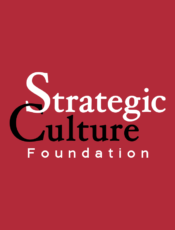By Tom MACKAMAN
Join us on Telegram![]() , Twitter
, Twitter![]() , and VK
, and VK![]() .
.
Contact us: info@strategic-culture.su
War Secretary Pete Hegseth has announced that 20 US soldiers who took part in the 1890 massacre of hundreds of Lakota men, women and children at Wounded Knee will keep the Medals of Honor that were awarded to them.
The Wounded Knee Massacre occurred on the cold winter day of December 29, 1890, when troops of the US 7th Cavalry killed an estimated 250 to 300 Lakota Sioux men, women, and children near Wounded Knee Creek in South Dakota. In the aftermath, 20 soldiers were awarded the Medal of Honor, the military’s highest recognition.
In a video posted on X late on Thursday, Hegseth said a review panel had recommended allowing the soldiers keep their medals in a study completed last year, and that he followed that recommendation. “We’re making it clear that [the soldiers] deserve those medals,” Hegseth said. Calling the men “brave soldiers,” he said the review panel had concluded that the medals were justly awarded. “This decision is now final,” he added, “and their place in our nation’s history is no longer up for debate.”
Hegseth’s announcement must be taken as a warning: An administration that is willing to proclaim as heroes the perpetrators of one of the most ghastly war crimes in American history is prepared to repeat such crimes, and worse, in the present.
Using rifles, artillery and canister fire, Hegseth’s “heroes” destroyed an entire village of the Miniconjou Lakota, the overwhelming majority of them women, children and elderly. Twenty-five US soldiers fell dead, mostly victims of “friendly fire” in units that had no combat experience and who were drunk on whiskey at the time of their attack.
The lead-up to the massacre was marked by decades of violent dispossession and broken treaties imposed on the Native peoples of the trans-Mississippi West. Out of this environment of loss and desperation, a spiritual revival movement emerged. Beginning in 1889 with Wovoka, a Paiute prophet, the movement spread rapidly among tribes throughout the region. Wovoka’s vision promised that, through faithful practice of the Ghost Dance—a ritualized communal circle dance—Native peoples could return to the world the many ancestors lost to war, disease and hunger; restore the buffalo, by then nearly hunted to extinction; and wash away the white man and all his works from their lands.
Reservation officials and the capitalist interests of the West—mine owners and ranchers—saw the peaceful religious movement as a threat, interpreting its millenarian message as the harbinger of an uprising.
The frozen body of Spotted Elk, killed in the massacre.
In the atmosphere of fear and despair in the wake of Sitting Bull’s murder, Spotted Elk, chief of the Miniconjou Lakota, decided to surrender to US forces. Suffering from pneumonia and hoping to avoid violence, he led his band south toward the Pine Ridge Reservation, seeking protection under Red Cloud, a chief cooperating with the American military. On December 28, 1890, the band was intercepted by the 7th Cavalry. Spotted Elk and his people were escorted to a camp near Wounded Knee Creek, which the soldiers surrounded with eight companies of cavalry and four cannons. “The soldiers and scouts outnumbered the Lakota warriors nearly five to one,” writes historian Peter Cozzens.
Ultimate responsibility for the massacre rests with the military brass. General John Rutter Brooke had given orders to his subordinate, Col. James Forsyth, to “disarm Big Foot’s [Spotted Elk’s] Band, prevent the escape of any; [and] if they fought to destroy them.” On December 29, Forsyth ordered the band to surrender its weapons. During an invasive and chaotic search, an altercation broke out, a shot rang out, and soldiers opened fire with rifles and cannon in a wanton killing spree that lasted for more than an hour.
US soldiers “coldly gunned down” those who were fleeing, including, in Cozzen’s words, “five girls who tried to outrun the mounted troopers. Moments before the soldiers overtook them, the girls sat down and faced their killers. The troopers raised their rifles, the girls covered their faces with blankets, and in a muzzle flash they were dead.” The soldiers, again acting under orders, then launched canister fire—shrapnel bombs—and artillery at individuals “who posed no conceivable threat to anyone.”
Testimony from soldiers and Native Americans again and again returned to the slaughter of children and babies by the American military. Dewey Beard, a survivor, recalled, “Now when I saw all those little infants lying there dead in their blood, I felt that even if I ate one of the soldiers it would not appease my anger.” A lieutenant involved in the massacre recalled the noises “from all sides… giving voice to horror at what happened—the killing of women with papooses on their backs.”
Black Elk, interviewed by poet John G. Neihardt in 1932, recalled the scene, “When I look back now from this high hill of my old age, I can still see the butchered women and children lying heaped and scattered all along the crooked gulch as plain as when I saw them with eyes still young.”
The American state has never been wont to apologize for its many war crimes, even one so egregious as Wounded Knee. Though the atrocity has long been recognized for its brutality and meticulously documented horrors, capitalist politicians have never rescinded the Medals of Honor awarded to soldiers for their roles in the massacre.
Legislation introduced several times in Congress has repeatedly failed, most recently through the “Remove the Stain Act,” reintroduced in May 2025 by Senator Elizabeth Warren and Representative Jill Tokuda, which was referred to committee without passage. Hegseth’s pronouncement itself follows an abortive review launched under the Biden administration by Defense Secretary Lloyd Austin, who, in 2021, ordered the department to examine the Medals of Honor awarded for Wounded Knee. That review concluded without recommending their removal, leaving the medals in place.
Hegseth’s declaration is akin to the Trump administration’s rehabilitation of the military “heroes” of the Confederate States of America who waged a bitter counterrevolutionary war to preserve slavery in the 1860s, including General Robert E. Lee. Hegseth wishes to proclaim the most heinous and shameful acts of oppression heroic by administrative fiat.
The Trump administration’s unapologetic glorification of the Wounded Knee perpetrators arrives amid calls from Hegseth for a revival of the American “warrior ethos.” Hegseth’s meeting with the nation’s generals and admirals, charged with imparting the lessons of this “ethos” to the officer corps, is a chilling effort to recast the slaughter of civilians and the trampling of democratic rights as honored military traditions. Today, as the administration deploys federal forces to American cities and authorizes “full force” against protesters, the Army is being explicitly taught to look back upon acts like Wounded Knee not as crimes, but as examples.
As the Israeli state wages a genocidal war against the population of Gaza with the unconditional support of Washington, the logic that animated the massacre at Wounded Knee endures. Yasser Arafat famously warned that Palestinians did not wish to become the “Red Indians” of the Middle East—a people extirpated, driven into exile, and then mourned as tragic relics by the very powers that destroyed them. The valorization of colonial violence in the American heartland and the devastation unleashed on Gaza are linked, not merely by historical analogy, but by the present-day escalation of imperial force.
Hegseth’s celebration of the Wounded Knee medals serves as a warning to the working class and oppressed everywhere. The American military leadership is being instructed not to shrink from the “necessity” of mass repression, but to embrace it—at home as well as in distant lands. The lessons of Wounded Knee are not consigned to the past, but must be urgently recalled as a present danger.
Original article: World Socialist Web Site








